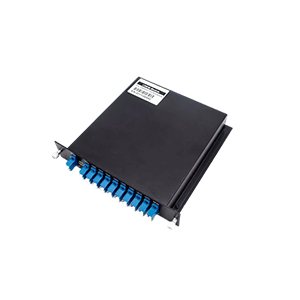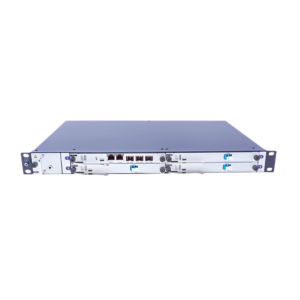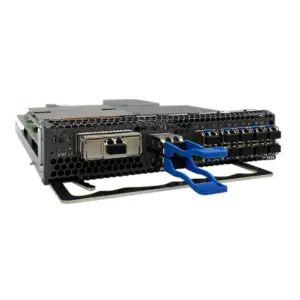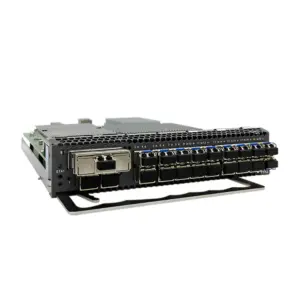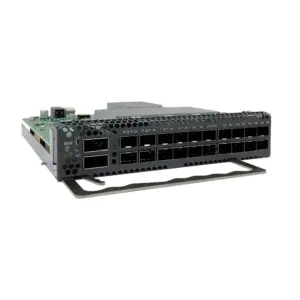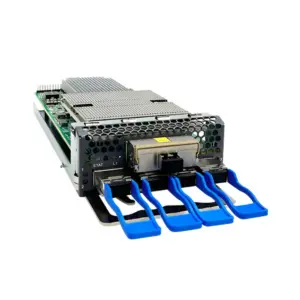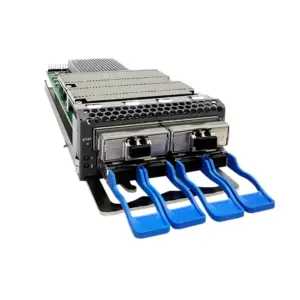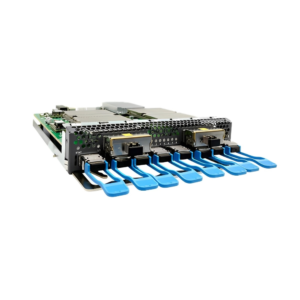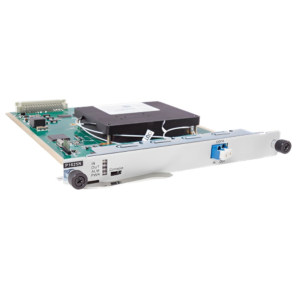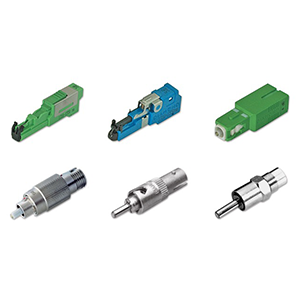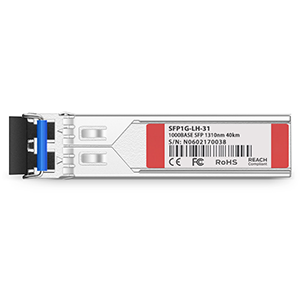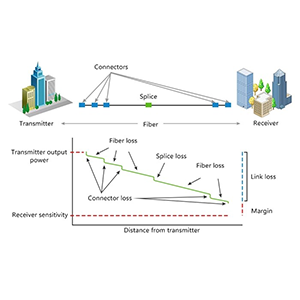In this article, I will explain in detail the different types and capabilities of Wavelength Division Multiplexing (WDM) devices. By gaining an in-depth understanding of these devices, you will better understand the working principles and application areas of WDM technology.
WDM technology is an important optical communication technology that significantly increases optical fiber transmission capacity by transmitting multiple independent optical signals in the same optical fiber. WDM equipment plays a key role in optical communication networks, allowing multiple signals to be transmitted simultaneously to meet the growing demand for data transmission.
Introducing several common WDM devices, including wavelength division multiplexers (Mux/Demux), optical switches, optical amplifiers and optical monitors. We will explain in detail their working principle, main functions and applications in optical communication systems. By understanding the different types and functions of these WDM devices, everyone will be able to better understand the application and significance of WDM technology in the field of optical communications.
Basic principles of WDM equipment
The basic principle of WDM (wavelength division multiplexing) technology is to use optical signals of different wavelengths to transmit data in the same optical fiber to achieve high-capacity optical communications. WDM technology multiplexes multiple optical signals so that they can be transmitted simultaneously in optical fibers without interfering with each other.
The core idea of WDM technology is to use different wavelengths (or frequencies) to encode and differentiate optical signals. In traditional single-wavelength optical communication systems, each optical fiber can only transmit one optical signal, while WDM technology can transmit multiple optical signals simultaneously, each signal using a different wavelength for encoding. In this way, one optical fiber can transmit multiple signals, greatly increasing the transmission capacity.
WDM equipment is a key component in realizing WDM technology. The most basic equipment is the wavelength division multiplexer (Mux) and the demultiplexer (Demux). The wavelength division multiplexer combines optical signals of different wavelengths into one optical fiber for transmission, while the demultiplexer separates multiple wavelengths in the optical fiber so that the optical signals corresponding to each wavelength can be received and processed.
In the WDM system, the transmitter uses a wavelength division multiplexer to combine the optical signals generated by multiple signal sources into a composite optical signal. This composite optical signal is composed of the superposition of optical signals of different wavelengths, and each wavelength corresponds to an independent optical signal. Then, the composite optical signal is transmitted to the receiving end through the optical fiber.
At the receiving end, the demultiplexer separates the composite optical signal into optical signals of different wavelengths. The optical signal corresponding to each wavelength is converted into an electrical signal through the photodetector, and then decoded and processed accordingly, and finally the original data is obtained.
By utilizing optical signals of different wavelengths for data transmission, WDM technology realizes high-capacity and high-speed optical communications. The key function of WDM equipment is to realize wavelength multiplexing and demultiplexing to ensure that multiple signals can be transmitted simultaneously without interference. This provides powerful transmission capabilities for optical communication systems to meet the growing demand for data transmission.
Transmission equipment
In the WDM system, in addition to wavelength division multiplexers and demultiplexers, there are other key transmission equipment, including optical fiber transceivers and optical transmission systems. These devices are responsible for converting optical signals of different wavelengths into electrical or optical signals and transmitting them.
An optical fiber transceiver is a device used to convert electrical signals into optical signals (transmitting end) or optical signals into electrical signals (receiving end). At the transmitting end, the optical fiber transceiver converts the electrical signal into an optical signal of the corresponding wavelength and transmits it through the optical fiber. It usually consists of a laser, a modulator, and a photodetector. The laser produces a high-purity optical signal, the modulator is used to modulate the optical signal to carry data information, and the photodetector converts the optical signal into an electrical signal for subsequent processing.
At the receiving end, the optical fiber transceiver receives the optical signal transmitted in the optical fiber and converts it into an electrical signal. The photodetector plays a key role in converting the received optical signal into an electrical signal of the corresponding wavelength. These electrical signals can be further amplified, decoded and processed to restore the original data.
In addition to fiber optic transceivers, optical transmission systems are also important equipment in WDM transmission. The optical transmission system is responsible for managing and controlling the transmission of optical signals, including functions such as optical amplification, wavelength routing, and optical monitoring.
An optical amplifier is a device used to amplify optical signals, which can increase the transmission distance and intensity of the signal. Optical amplifiers are usually based on erbium-doped or erbium-doped and lutetium-doped fiber amplifier technology, which can amplify optical signals of different wavelengths to compensate for the loss of optical signals during transmission.
Wavelength Router is a device used to control the path and routing of optical signals. It can guide optical signals of different wavelengths to different paths or output ports as needed to achieve flexible routing and management of optical signals.
Optical monitors are used to monitor the quality and performance of optical signals. It can detect parameters such as power, wavelength, and bit error rate of optical signals, and provide feedback information for network adjustment and optimization.
The combination and cooperation of these transmission devices enable the WDM system to achieve multi-wavelength optical signal transmission. Through the conversion of optical fiber transceivers and the management of optical transmission systems, optical signals of different wavelengths can be transmitted in optical fibers and decoded and processed at the receiving end to achieve high-capacity and high-speed optical communications.
Multiplexing and demultiplexing equipment
In the WDM system, the multiplexer (Mux) and the demultiplexer (Demux) are key devices for multiplexing and demultiplexing optical signals. The multiplexer combines multiple optical signals into a single optical fiber for transmission, while the demultiplexer separates multiple optical signals in the optical fiber so that the optical signals corresponding to each wavelength can be received and processed.
A multiplexer is a device used to combine multiple optical signals into a single optical fiber. It has multiple input ports and one output port. Each input port corresponds to an optical signal of one wavelength, and the output port is a combined composite optical signal. Multiplexers use optical devices (such as gratings, waveguides, etc.) to split and combine optical signals of different wavelengths so that they can be transmitted simultaneously in optical fibers.
A demultiplexer is a device used to separate multiple optical signals in an optical fiber. It has one input port and multiple output ports. The input port receives a composite optical signal, and each output port corresponds to an optical signal of one wavelength. The demultiplexer uses optical devices to separate the composite optical signal into optical signals of different wavelengths so that the optical signals corresponding to each wavelength can be received and processed.
The key component of a multiplexer and demultiplexer is the grating or waveguide. A grating is a special optical device that splits and combines optical signals based on wavelength. The working principle of the grating is based on the diffraction effect of light. By diffracting the incident light, optical signals of different wavelengths are separated into different angles and converged to different positions at the output end. A waveguide is a light-guiding structure used to transmit optical signals. It can guide and separate optical signals along a specific path.
Multiplexers and demultiplexers can support different wavelength numbers and spacing as needed. Common multiplexers and demultiplexers include duplexer (Duplexer), full multiplexer (MUX), and division multiplexer (DEMUX). A duplex multiplexer can perform multiplexing and demultiplexing at the same time, switching the transmission direction of optical signals in both directions. Full multiplexers and sub-multiplexers are mainly used for multiple signal sources and receivers. They are used to combine multiple signals into a single optical fiber or separate multiple signals in an optical fiber.
Through multiplexing and demultiplexing equipment, WDM systems can realize multi-wavelength optical signal transmission. This technology makes full use of the transmission capacity of optical fibers and meets the needs of high-capacity and high-speed optical communications.
Optical amplifier
In WDM systems, optical amplifiers are key devices used to enhance optical signal strength and transmission distance. The main optical amplifiers include pump optical amplifiers (Erbium-Doped Fiber Amplifier, EDFA for short) and Raman Amplifiers.
Pump optical amplifier (EDFA) is one of the most commonly used optical amplifiers. It uses erbium-doped optical fiber as the amplification medium and enhances the optical signal through the injection of pump light. The pump light is usually an optical signal generated by a high-power laser, and its wavelength is different from the wavelength of the optical signal to be amplified. When pump light is injected into an erbium-doped fiber, erbium-doped ions are excited, producing a process called stimulated emission, in which the erbium-doped ions release energy and transfer it to the optical signal to be amplified. This process causes the optical signal to be amplified to be amplified in the optical fiber, enhancing its intensity and transmission distance.
Raman Amplifier is another commonly used optical amplifier. It utilizes the Raman scattering effect to enhance light signals. When the optical signal is transmitted in the optical fiber, it will interact with the optical fiber molecules, and part of the energy of the optical signal is transferred to the vibration mode of the optical fiber molecules, resulting in Raman scattering. The Raman optical amplifier enhances the Raman scattering effect by injecting high-power pump light, thereby enhancing the intensity and transmission distance of the optical signal. The wavelength of the pump light is usually longer than the wavelength of the optical signal to be amplified in order to effectively stimulate Raman scattering.
Optical amplifiers enhance the strength of optical signals, allowing them to be transmitted over longer distances in optical fibers without excessive attenuation. The amplified optical signal can effectively overcome the loss during optical fiber transmission and extend the transmission distance. In addition, optical amplifiers can also improve the signal-to-noise ratio of optical signals, allowing the receiving end to better detect and decode optical signals.
Pump optical amplifiers and Raman optical amplifiers play a vital role in WDM systems, allowing optical signals to be transmitted with high intensity and long distances. Their application enables optical communication systems to achieve high-capacity, high-speed and long-distance optical signal transmission.
Optical Filter
In WDM systems, optical filters are key devices used to select and separate optical signals of specific wavelengths. Optical filters can selectively transmit or block optical signals within a specific wavelength range to achieve wavelength selection and separation. In WDM systems, common optical filters include narrowband filters and grating filters.
A narrowband filter is an optical filter with a narrow transmission bandwidth. It can selectively transmit light signals within a specified wavelength range and block light signals of other wavelengths. Narrowband filters are usually based on the interference principle, where the optical signal is wavelength selected by interference and reflection through multiple thin film layers. The thickness and refractive index of these film layers affect the transmission characteristics of the filter, thereby achieving selective transmission of specific wavelengths.
Grating filters are grating-based optical filters that use the diffraction effect of gratings to select and separate optical signals of specific wavelengths. Grating is an optical element with a periodic structure that can disperse the optical signal into different diffraction angles according to the wavelength and angle of incident light. By adjusting the period and refractive index of the grating, selective separation of optical signals of specific wavelengths can be achieved. Grating filters can have multiple channels, each channel corresponding to a specific wavelength.
Selecting and separating optical filters for specific wavelengths is often based on the wavelength range and spacing used in WDM systems. Selecting appropriate filters as needed can achieve selective transmission and separation of optical signals of specific wavelengths. In WDM systems, multiple optical filters can be used in combination to achieve more complex wavelength selection and separation functions.
Optical filters play a vital role in WDM systems, enabling wavelength selection and separation of optical signals, thereby realizing the transmission and processing of multi-wavelength optical signals. This technology enables optical communication systems to transmit optical signals of multiple wavelengths simultaneously, achieving high-capacity and high-speed data transmission.
Manage and control devices
In a WDM system, there are some devices used to manage and control the power and wavelength of optical signals. These devices include optical power monitors and wavelength selectors.
An optical power monitor is a device used to monitor the power of optical signals. It is usually located at different nodes or receiving ends in optical communication systems and is used to measure and monitor the power level of optical signals. Optical power monitors can be deployed at multiple locations in the system as needed to ensure that the power of optical signals during transmission meets requirements.
These monitors typically use a photosensitive detector to convert the power of an optical signal into an electrical signal, and then use a circuit or algorithm to measure and record the power value. By monitoring optical power, operators can understand the power level of optical signals in real time and monitor and adjust the system in real time.
A wavelength selector is a device used to select and adjust the wavelength of an optical signal. In a WDM system, optical signals of multiple wavelengths are transmitted simultaneously, and a wavelength selector allows optical signals of specific wavelengths to be selectively transmitted or blocked. Wavelength selectors are usually based on grating or optical filter technology.
The grating wavelength selector uses the diffraction effect of the grating to disperse the optical signal into different angles according to different wavelengths, and selects the optical signal of a specific wavelength by adjusting the incident angle. Optical filter wavelength selectors use the transmission characteristics of the filter to selectively transmit or block optical signals in a specific wavelength range. Wavelength selectors can be used in applications such as wavelength routing, wavelength conversion, and wavelength multiplexing to achieve flexible control of the wavelength of optical signals.
Through equipment such as optical power monitors and wavelength selectors, WDM systems can monitor, adjust and control optical signal power and wavelength. These devices allow operators to monitor the performance of optical signals in real time and intervene and optimize as needed to ensure stable operation of the system and high-quality optical signal transmission.
Summary:
Thank you for reading this blog, we explain in detail the different types and functions of Wavelength Division Multiplexing (WDM) devices. We learned that WDM technology uses the principles of multi-wavelength transmission and optical signal multiplexing to transmit data through optical signals of different wavelengths to achieve efficient optical fiber communications.
When you choose our products, you will receive advanced WDM equipment support, and we are committed to providing high-quality solutions to meet your communication needs. We will continue to innovate and improve to bring you more business opportunities and success!
WDM FAQ
WDM equipment refers to the physical devices and components used in Wavelength Division Multiplexing (WDM) systems. These equipment facilitate the multiplexing and demultiplexing of multiple wavelengths of light for simultaneous transmission over a single optical fiber.
An optical multiplexer combines multiple optical signals, each at a different wavelength, into a single fiber for transmission. It splits the incoming signals into different wavelength channels and combines them into a composite signal.
An optical demultiplexer separates the combined wavelengths at the receiving end, directing each wavelength to its respective receiver or destination. It splits the composite signal into individual wavelength channels.
Optical transceivers are devices that transmit and receive optical signals. In WDM systems, these transceivers are designed to operate at specific wavelengths and are responsible for converting electrical signals into optical signals for transmission and vice versa.
Amplifiers are used in WDM systems to boost optical signals and compensate for signal loss over long distances. Erbium-doped fiber amplifiers (EDFAs) are commonly used in WDM systems to amplify signals without the need for optical-to-electrical conversion.
Optical switches are used to route optical signals within a WDM system. They enable the switching of optical paths, allowing signals to be directed to different destinations or routes within the network.
Optical transceivers play a crucial role in WDM systems by transmitting and receiving optical signals at specific wavelengths. These transceivers typically consist of a transmitter section and a receiver section. The transmitter section converts electrical signals carrying data into optical signals at a specific wavelength. The optical signals are then multiplexed with other wavelength channels using an optical multiplexer.
At the receiving end, the optical signals are demultiplexed using an optical demultiplexer. The receiver section of the transceiver then receives the demultiplexed optical signals at the specific wavelength assigned to the transceiver. The receiver section converts the optical signals back into electrical signals, which can be further processed or distributed to the appropriate destination.
1.Number of wavelengths: Determine the number of wavelengths (channels) required for your specific application. This will dictate the capacity and scalability of the WDM equipment.
2.Channel spacing: Consider the channel spacing, which refers to the separation between wavelengths. Narrower channel spacing allows for more wavelengths but may introduce challenges such as crosstalk and dispersion.
3.Transmission distance: Evaluate the transmission distance requirements of your application. Different WDM equipment may have varying capabilities in terms of maximum reach and signal quality over long distances.
4.Compatibility: Ensure compatibility between different components of the WDM system, such as transceivers, multiplexers, demultiplexers, and amplifiers. Compatibility is crucial to ensure seamless integration and optimal performance.
5.Vendor support and reliability: Consider the reputation, support, and reliability of the WDM equipment vendors. Choose reputable vendors that provide reliable products, technical support, and future-proof solutions.
Yes, in most cases, WDM equipment can be used with existing fiber optic infrastructure. WDM technology is compatible with both single-mode fiber (SMF) and multimode fiber (MMF) types. However, it is important to ensure compatibility between the WDM equipment and the existing infrastructure, especially in terms of wavelength specifications and transmission protocols. Upgrading or modifying existing infrastructure may be necessary to accommodate the specific requirements of the WDM equipment.
Yes, WDM systems are designed to be scalable and upgradable. As technology advances and network requirements evolve, it is possible to upgrade WDM equipment to increase capacity, add more wavelengths, or improve performance. Upgrades may involve replacing or adding components such as transceivers, multiplexers, demultiplexers, or amplifiers. It is important to consider the scalability and compatibility of the existing equipment when planning for future upgrades to ensure seamless integration and optimal performance.
WDM related products
-
1U EDFA device
-
1x100G+10x10G to 1x200G multiplexing transponder
-
20x10G to 1x200G multiplexing transponder
-
20x10G to 2x100G multiplexing transponder
-
25G SFP28 BIDI 1270nm 10km Transceiver
-
25G SFP28 BIDI 1270nm 300m Industrial Module
-
25G SFP28 BIDI 1270nm 300m Transceiver
-
25G SFP28 BIDI 1270nm 40km Optical Transceiver
-
25G SFP28 BIDI 1270nm Industrial Transceiver
-
25G SFP28 BIDI 1310nm Industrial Transceiver
-
25G SFP28 BIDI 1330nm 10km Transceiver Module
-
25G SFP28 BIDI 1330nm 300m Industrial Module
-
25G SFP28 BIDI 1330nm 300m Transceiver Module
-
25G SFP28 BIDI 40km Optical Transceiver Module
-
4x100G to 1x400G multiplexing transponder
-
4x100G to 2X200G multiplexing transponder
-
8x100G to 2x400G multiplexing transponder
-
DWDM EDFA Card

